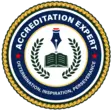
Introduction
In today’s competitive educational landscape, job placement rates in higher education have become one of the most crucial indicators of an institution’s effectiveness. Students and families prioritize career success for college graduates when selecting colleges, understanding that higher education is an investment that must yield tangible career outcomes.
Institutions that track, analyze, and improve their graduate employment outcomes not only meet higher education accreditation standards but also establish themselves as industry leaders in career-focused education. This article explores:
✔ How job placement rates impact student career readiness
✔ Why institutions with strong university job placement statistics gain a competitive edge
✔ The role of accreditation and compliance in job placement tracking
Related Article: Higher Education Accreditation Process
Student Success and Satisfaction
Job placement rates in higher education directly impact college graduate employment rate, affecting career opportunities and student perception of higher education as a valuable investment. Graduates who secure meaningful employment experience greater financial stability, career growth, and overall satisfaction with their educational journey.
Key Insight: A 2023 Gallup poll found that 73% of students consider job placement rates a major factor when choosing an institution
The Benefits of Strong Job Placement Outcomes:
✔ Increased student confidence in the institution
✔ Higher return on investment (ROI) for students and families
✔ Stronger alumni engagement, leading to mentorship and donations
Explore More: Vocational School Accreditation

Institutional Reputation and Market Competitiveness
An institution’s reputation is closely tied to its ability to produce employable graduates. High university job placement statistics send a clear signal to students, parents, and employers that an institution provides industry-relevant education.
Did you know? Institutions with strong placement rates are more likely to attract corporate partnerships, leading to internship programs, on-campus recruitment, and industry collaborations.
How Job Placement Rates Influence Reputation:
✅ Boosts enrollment rates—more students apply to institutions with strong graduate employment outcomes
✅ Strengthens employer partnerships, leading to better job opportunities for graduates
✅ Enhances alumni engagement, increasing donations and mentorship opportunities
Further Reading: Accreditation Bureau Site Visit
Accreditation Standards and Compliance
Why Accreditation Agencies Track Job Placement Rates
Accreditation bodies place significant emphasis on graduate employment outcomes as a benchmark for institutional effectiveness. Institutions that fail to meet these standards risk:
❌ Losing accreditation, leading to funding cuts
❌ Reduced federal aid eligibility (Title IV financial aid programs)
❌ Diminished credibility in the education market
How to Maintain Accreditation Through Job Placement Monitoring:
✔ Implement accurate tracking systems for college graduate employment rate
✔ Regularly assess program effectiveness based on job market demands
✔ Maintain transparent reporting to accrediting bodies and prospective students

Helpful Resource: Accreditation Approval in Higher Education
The Role of Industry Partnerships in Job Placement Success
Institutions with strong employer partnerships provide graduates with greater job placement opportunities. Universities and colleges should actively engage with industry leaders to bridge the gap between education and employment.
Effective Strategies to Improve Job Placement Rates:
✅ Develop employer advisory boards to align curricula with industry needs
✅ Expand internship and co-op programs to provide students with real-world experience
✅ Host industry networking events that connect students with potential employers
✅ Offer career development workshops on resume building, interview techniques, and job search strategies
Related Guide: Higher Education Strategic Planning
What’s Next? (Stay Tuned for Part 2!)
This was just the first part of our comprehensive series on job placement strategies in higher education. In Part 2, we’ll dive into:
✔ Challenges institutions face in ensuring job placement success
✔ Best practices for career services to increase graduate employment
✔ How data analytics can help institutions improve job placement tracking
Don’t miss out! Read Part 2 soon on AccreditationXpert.com




